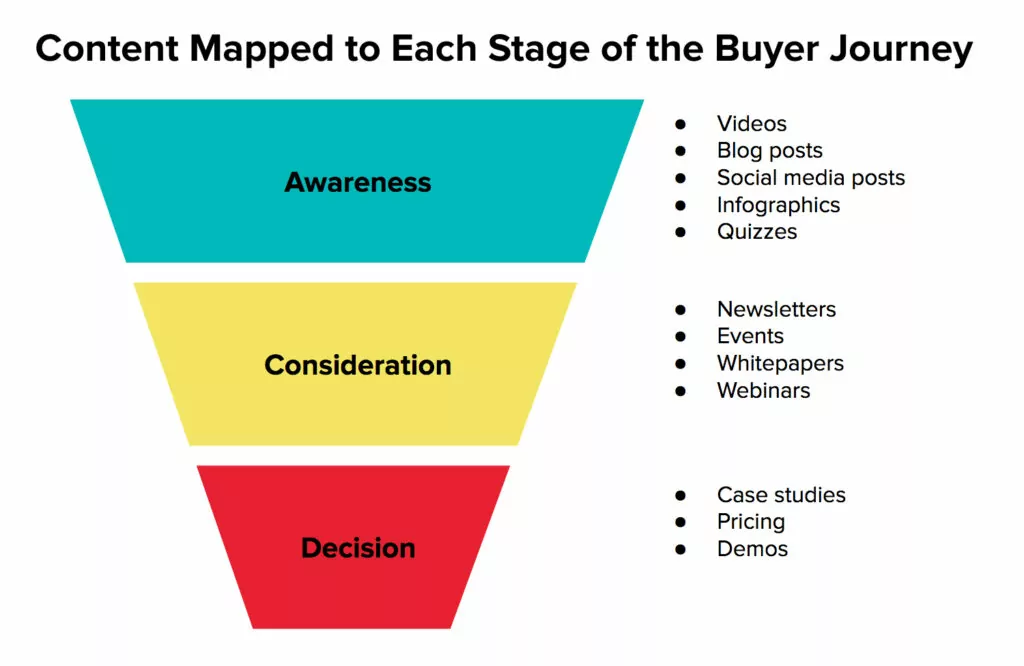Today’s businesses aim to drive traffic to their website and turn visitors into customers. By optimizing your lead conversion path, you increase the likelihood of higher revenue generation.
Of all the consumers in America, nearly 270 million shop online. For this reason, businesses need to stand out from the competition, increase visibility, and send more people to their websites. There, businesses can guide shoppers through their customer journey and usher them through the sales funnel. The ultimate goal is for website visitors to convert in some way. While this usually takes several steps, the more streamlined the process, the more conversions a company can see.
Read on to learn ways to optimize your lead conversion path for sales growth and revenue generation.
Key Takeaways
- A lead conversion path is the series of steps a website visitor goes through before they convert into a customer.
- Lead conversion paths typically consist of a landing page, call-to-action, thank-you page, and endpoint.
- Streamlining the lead conversion path minimizes frustrations and earns customer loyalty, which helps to generate more revenue and develops brand ambassadors.
- Optimize your lead conversion path through data assessment, content creation, and user experience prioritization.
What is a Lead Conversion Path?
Any time someone visits your website, they’re a potential lead. By being on your site, they’re showing interest in your products, your brand, and your possible solutions to their unique problems. Through strategic content marketing based on audience research, you can optimize your website to ensure that your pages are easily navigable and provide useful information that resonates with your target audience.
Once someone has landed on your site, they go through a series of steps to convert into a customer. This is a lead conversion path. Although conversion paths can vary from business to business, they generally consist of the same framework, which includes:
- Landing page: a webpage created to gather contact information in exchange for something of value (content, product, etc.)
- Call-to-action: entices users to take a specific action, like subscribe, register, or buy
- Thank-you page: after a visitor acts, this page shows your appreciation for their interest
- Endpoint: the delivery of whatever item of value the user was seeking (ebooks, whitepapers, purchases, etc.)
An example of a lead conversion path that includes all of these is when a visitor on your website wants to read a research study your company has recently published. They click on a link to read the report and are sent to a landing page. There, they enter their contact information into a form to access the content. After they submit their details, they’re sent to another page that thanks them and provides a link to download the study. This completes a successful lead conversion path.

Source: Impactplus
When you optimize conversion paths, you simplify the process and help guide shoppers more effectively and efficiently through their journey. This enables them to become customers more quickly and earns you a loyal following that will support your business with purchases and word-of-mouth promotion.
3 Ways to Optimize a Lead Conversion Path
By optimizing your lead conversion paths, you ensure you’re maximizing the ultimate power of your website as a lead-generating machine. Here are three ways to optimize a lead conversion path for optimal results.
1. Assess Data
To ensure you’re making the most of your website users’ experience, it’s important to assess several areas of your digital marketing strategy. Take a close look at content by taking inventory of all your website’s materials. Identify which content seems to appeal to your visitors, where they are in their customer journey when they find that content, and the buyer personas that are searching for this information.
Learn who your audience is. Create buyer personas to identify your ideal customer so you know what kind of experience they expect from your conversion path. Analyze user behavior to determine which steps of that process are effective and identify areas of frustration so you know what to improve. Investigate the areas of your website that are attracting activity. When you know how people are using your site, you can adjust to ensure it’s a useful tool and resource for your target audience.
The following video further explains what a buyer persona is, why it’s important, and how to create one for your business:
2. Create Compelling Content
When you know who your audience is and the kind of experience they’re seeking, you can create custom content that answers their questions and solves their unique problems. By publishing content your audience wants to read, you increase the chances that they’ll be attracted to your site. Once there, you can guide them through the sales funnel with more relevant and useful information.
You can also publish content that aligns with a website visitor’s particular phase of the customer journey. Consider creating valuable information that caters to the:
- Awareness stage: provides broad, general information to help a reader achieve a basic understanding
- Consideration stage: outlines functions and features to help shoppers who are weighing their options make a final decision
- Decision stage: when buyers are ready to make a purchase, content should convince them why they should choose your brand
Developing an effective content marketing strategy can help optimize your lead conversion path and create greater efficiencies and deliver positive results.
Source: Web Maxformance
3. Create a Positive User Experience
From an SEO standpoint as well as a lead conversion standpoint, your website must deliver a positive user experience. This means ensuring that all content is current and accurate. Make sure all links are working properly and still point to relevant, valuable resources. Your webpages should have prominently placed call-to-action buttons that encourage visitors to perform the preferred task.
Eliminate all spelling and grammatical errors. All these mistakes not only negatively affect the user experience but also cause readers to lose trust and confidence in your information and your brand.
As you optimize your website and craft your content, always keep your customer in mind. Make their needs and expectations a priority, and you’re sure to see positive results.
Optimize Your Lead Conversion Path
MXTR provides multi-location marketing automation to develop effective digital marketing strategies for businesses like yours.
Schedule a demo today to see how we can help you optimize your lead conversion path to encourage sales growth and revenue generation.







